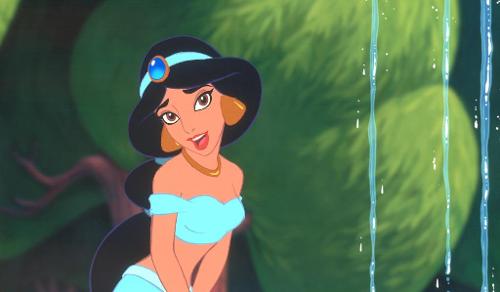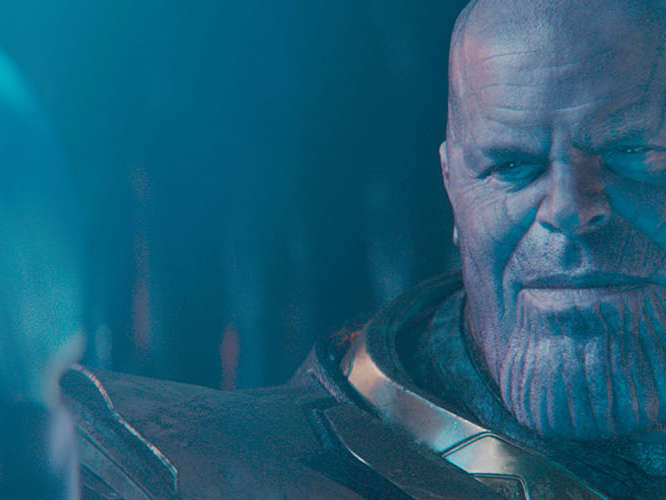Meet the Disney Animator Who Helped Create Some of Your Favorite Princesses: Mark Henn
An article from Yahoo about an iconic Disney animator, Mark Henn.
Fully computer-generated (and based on a Marvel comic book), the action-packed Big Hero 6 would seem to have very little in common with the classic Disney animated films of yore. And yet the Mouse House, while pushing in new directions and taking full advantage of the latest technologies, is also mindful of its traditions, which makes long-time employees like 34-year veteran Mark Henn more important to the studio than ever.
“I’m kind of a link to the past, or more specifically, to our heritage in Disney animation, which for 90 years has largely been hand-drawn,” Henn — the lead 2D animator on Big Hero Six and the man responsible for several of your favorite princesses — tells Yahoo Movies in a recent interview. “I’m bringing my expertise as a traditional animator, and I come alongside and partner with the animation supervisors and head of animation, and I work with the CG animators.”
Henn’s first project as a full-fledged Disney animator was the 1983 short Mickey’s Christmas Carol (below), an old-school kind of film that was far more in line with Snow White, Cinderella, and Sleeping Beauty than the techno-anime romp of BH6. Instead of spired castles in fairy-tale kingdoms, BH6 is set in a futuristic, Japanese-inspired version of San Francisco, while a friendly robot replaces helper mice and dwarfs.
But while modern technology presents possibilities never even considered by the last generation of animators, it takes guidance from veterans like Henn to help imbue the new artists with the company’s long-standing fundamentals.
“A lot of CG animators don’t draw, they aren’t trained draftsmen, and there’s a skill in drawing, a sense of appeal in the poses and expressions that I can help them craft in their scenes,” says Henn. “A lot of it has to do with appeal. It’s easy in CG to just move things around, and the computer can make things look very good, very quickly. But there’s an element to what I was taught — and what Walt instilled in his original animators — which was the idea of getting inside the character, and, What is the character thinking?”
Henn often hand-draws notes on digital scenes for the CGI animators. There few who are more qualified to teach professionals how to create compelling and emotionally rich characters, a crucial role that Henn clearly relishes. It is the next chapter in a distinguished career that has included playing a major part in the creation of the princesses (and a young lion) that helped revive a once-flagging animation unit in the late 1980s and early ’90s.
And as he tells it, one of the most iconic features of his first princess, Ariel (below) of The Little Mermaid, was a product of necessity.
“One of the big challenges [with Ariel] was that there is this image in most people’s minds that mermaids have blonde hair,” Henn recalls, “but the problem at the time was that the studio came out with this little film called Splash, about a year or two ahead of The Little Mermaid — and in that movie, you have a blonde mermaid.”
Daryl Hannah’s lovely Madison was such an iconic character at the time, in fact, that they had to specifically avoid any comparison or confusion.
“I can’t remember where the idea for a redhead came from; one of the directors, Ron Clements, is a redhead, but I don’t know if that had anything to do with it,” Henn admits, laughing. “It just came out at some point, a dev artist did a sketch and gave her red hair — and everyone said, ‘yeah, wow, that looks super.’”
Combine that crucial decision with movement inspired by an actress named Sherry Stone (who stood in as a live reference point), and you have one of the iconic characters that helped re-launch Disney Animation.
A few years later, after supervising animation on Belle in Beauty and the Beast, Henn created the iconic look for Princess Jasmine in Aladdin. It was his third consecutive leading lady, a plum assignment that nonetheless left him feeling a bit creatively stale. Henn credits animator Eric Goldberg’s suggestion that the film take inspiration from the iconic, curvy design work of Al Hirschfeld for helping him to establish a baseline aesthetic. He also tips his cap to his family for unwittingly providing the rest of his inspiration.
“I couldn’t crack that nut until I literally pulled a picture of my younger sister out my wallet thinking, Okay, she’s about this age, maybe 18 or 19 years old, and she’s got dark hair,” Henn remembered. “I just reached into my pocket, and I still had my sister’s high-school graduation picture. I looked at it, and at the time her hair was a roundish haircut shape that surrounded her face, and we were playing with things like that, so I essentially modeled Jasmine on my younger sister Beth.”
It was a nifty fix, and one that helped establish Henn’s as one of Disney’s more iconic animators. Over the past 20 years, he has further cemented his place in history by supervising animation on young Simba, Mulan, and Princess Tiana from The Princess and the Frog, and serving as lead 2D animator on Frozen. Henn himself learned from the best, and has fond memories of working with Roy Disney and no less than five of Disney’s Nine Old Men, a brain trust of artists who advised founder Walt and helped fashion some of the studio’s most legendary characters.
Henn has been a mainstay at the studio throughout his run of remarkable highs and significant lows. He can look back fondly on the days during which Roy Disney, Walt’s brother and studio co-founder, hung around the animation department, dispensing advice and anecdotes, while also being able to speak to the many changes in corporate structure and leadership that the department has weathered in the last two decades.
“I think our biggest fears have always been having at the highest level people that don’t recognize or appreciate the fact that this company’s foundation is animation, and that it’s still animation,” he said. “You go to the [Disney’s theme] Parks and most of everything you see in the Parks has its roots or is directly inspired by animation.”
Back in 2007, when Pixar’s John Lasseter and Ed Catmull took over the animation studio, it was floundering, and they were under internal pressure to close it down. Some of those in positions of power at Disney had figured that, with Pixar winning Oscars — and Disney Animation Studios films like Treasure Planet, Home on the Range, and Brother Bear failing at the box office — it was time to move on.
Instead, the pair decided to re-hire some of Henn’s old colleagues, like his Little Mermaid directors Ron Clements and John Musker, which helped revive the company.
Henn, an old classmate of Lasseter at CalArts, notes that his boss “grew up with” Disney animation, and credits him for re-injecting life into the studio. Lasseter even gave Henn the opportunity to go back to the first real character he worked on in the 2009 short Get a Horse, which harkened back to the original Mickey shorts of the 1920s and early ’30s.
“Mickey has morphed into a logo, an icon,” Henn says. “Sometimes there’s an overcautiousness or preciousness to Mickey that I think we as artists or animators always weren’t too concerned about, not in a bad way, but just to say hey, Mickey is a character for all ages. On Get a Horse, we had fun because you had to almost abandon the animation principles that we have spent our entire careers fine-tuning and go back to a very simple, limited style that they were doing in the 1930s.”
Throwback shorts aside, it’s clear that the future of animation at Disney (and most of the feature-film industry) is in 3D-computer projects. Though often breathtaking in its capacity to create enormous, detailed scenes, the technology does lose some of the quirks that have been the hallmark of the art, which is why Henn calls it The Great Equalizer.
“There are subtle differences that show up in the hand-drawn world more so than in in the computer world,” Henn says. “We all work the same model sheet, but we all have our own slightly, varying drawing styles, which you don’t have in the CG world. There is no more of [being able to] identify a scene based on how it’s drawn, because you know the style of the artist. In the CG world, everything looks the same.”
Henn animated the “Whole New World” song sequence in Aladdin for example, which might be noticed by an eagle-eyed fan with some familiarity of the animator’s personal style.
Technological progress, though, is a fact of life. Henn is excited to be working on Disney’s next computer animated film, 2016’s Moana, and is very much enjoying his current role as a mentor and artist with the company. Still, as a traditional animator, he’s hoping that the art of 2D doesn’t entirely go by the wayside.
“I would hate to see it disappear completely, and I don’t think it will, because I think there’s enough people that enjoy the art and the drawing of doing 2D,” Henn said. “I think whether we do it or not, 2D animation will always be somewhere.”







